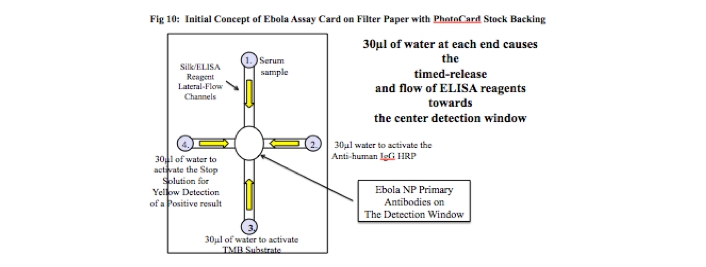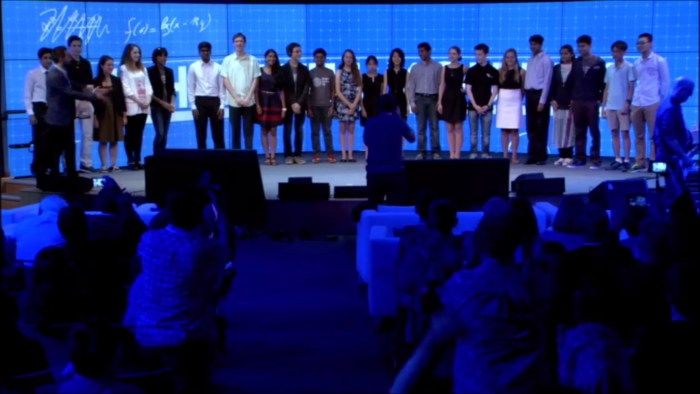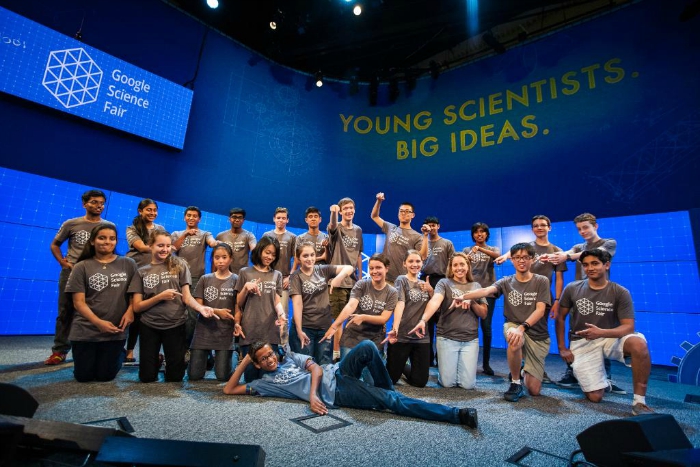
Whoo! This just a whole meaning to the shame! Now all those Nigerian students in the sciences especially those Ogas (bosses)/wanna’s be medicine students that keep on feeling themselves…I leave you to your God.
Oliva Hallisey, a 16-year-old from the US, won the 2015 Google Science Fair with her project to develop a fast, cheap, and stable test for the Ebola virus, which she says gives easy-to-read results in less than 30 minutes – potentially before someone is even showing symptoms.
According to her project description: "Current Ebola detection methods are complex, expensive, require unbroken refrigeration from manufacture to use and up to 12 hours from testing to confirmed diagnosis … The [test] provides rapid, inexpensive, accurate detection of Ebola viral antigens based on colour change within 30 minutes in individuals prior to their becoming symptomatic and infectious."

The problem with many current Ebola tests are many, Hallisey wrote in her science fair description:
Current methods of Ebola detection utilise enzyme-linked immunosorbent assay (ELISA) detection kits which cost approximately US$1.00 each, require complex instrumentation, trained medical professionals to administer, and up to 12 hours from testing to diagnosis.
While Hallisey wasn’t able to test her invention on real Ebola patients or virus, she showed it could detect a protein from the virus.
The test uses the typical components of an Ebola test, which is made up of antibodies (the tags that our immune system uses to mark viruses and bacteria as invaders) and chemicals that cause the test to change colours if these antibodies bind to Ebola proteins in the sample.
The big innovation: To make the test stable, Hallisey used silk fibres to stabilise the chemicals on card stock, allowing them to sit around at room temperature for up to three weeks and still be effective. No refrigeration required.
She then used these silk-stabilised chemicals to design a paper-based test that requires only a serum sample (the clear part of the blood after the red blood cells have been removed) and water to run.
The three chemicals used to detect the Ebola protein-bound antibodies are added to separate corners of the paper (2,3,4 in the diagram below). And the anti-Ebola antibodies are in the center.

To run the test, the serum sample is added to the open corner (1). Then, one by one, water is added to the chemicals, so they flow down to the center of the test paper, kind of like how a paper towel wicks up liquid even when only the corner of it is dipped in water.
The chemicals, serum sample, and water then combine in the right order and timing to give a positive or negative readout for the presence of Ebola proteins.
In the time-lapse GIF below, you can see the addition of the water at specific intervals, and how the chemicals come together to create a positive yellow reading:
The early detection of virus infection is critical for patients, since the faster you start to treat someone the more likely they are to survive. Having a test that is simple and can be stored a room temperature would be a game changer.
Hallisey, who is currently entering her junior year at Greenwich High School in Connecticut, says her test could also be adapted to detect HIV, Dengue and Yellow fever viruses, Lyme disease, and even certain cancers.
The winners of the fifth annual Google Science Fair were announced live from Google Headquarters in Mountain View, California. The event was hosted by Derek Muller, who created the science and engineering channel Veritasium.
Hallisey beat out 22 other finalists for the grand prize. She takes home US$50,000 in scholarship funding from Google.
The science fair is meant to challenge the next generation of young scientists, inventors, and innovators from around the globe. All teens between ages 13 to 18 year old are invited to apply. Thousands of participants from around the world applied, and were narrowed down to 22 finalists that came to the celebration.
Here are all the finalists lined up on stage above.

The science fair participants also got a special visit from Ahmed Mohamed, the Texas teen who was arrested at school after bringing in a clock to show his teachers:
This article was originally published by Business Insider.